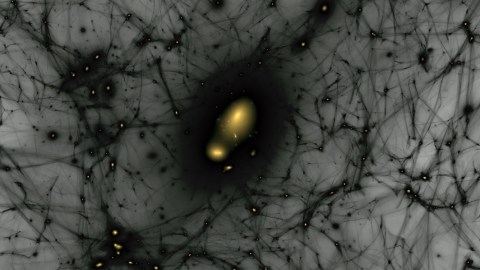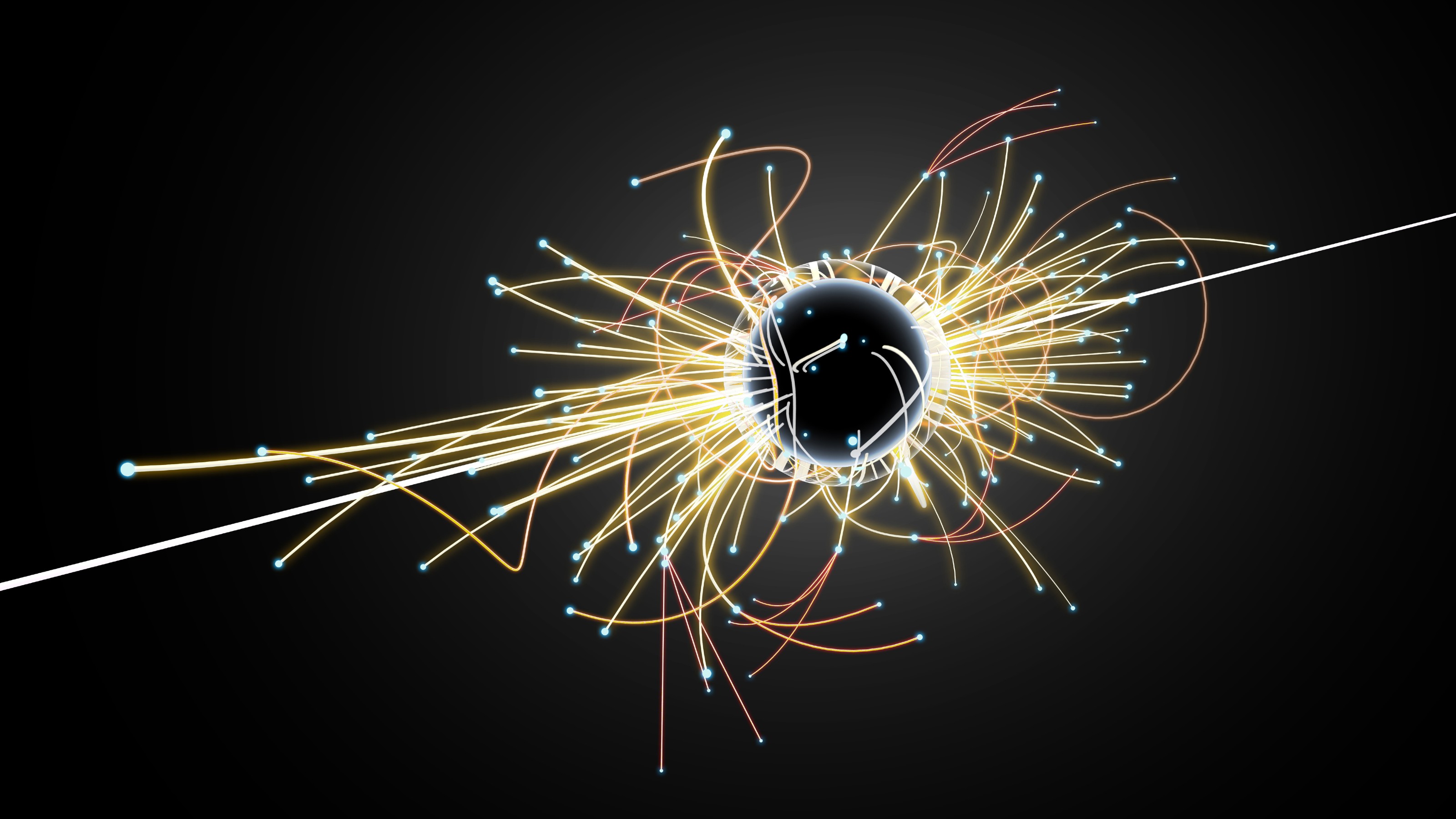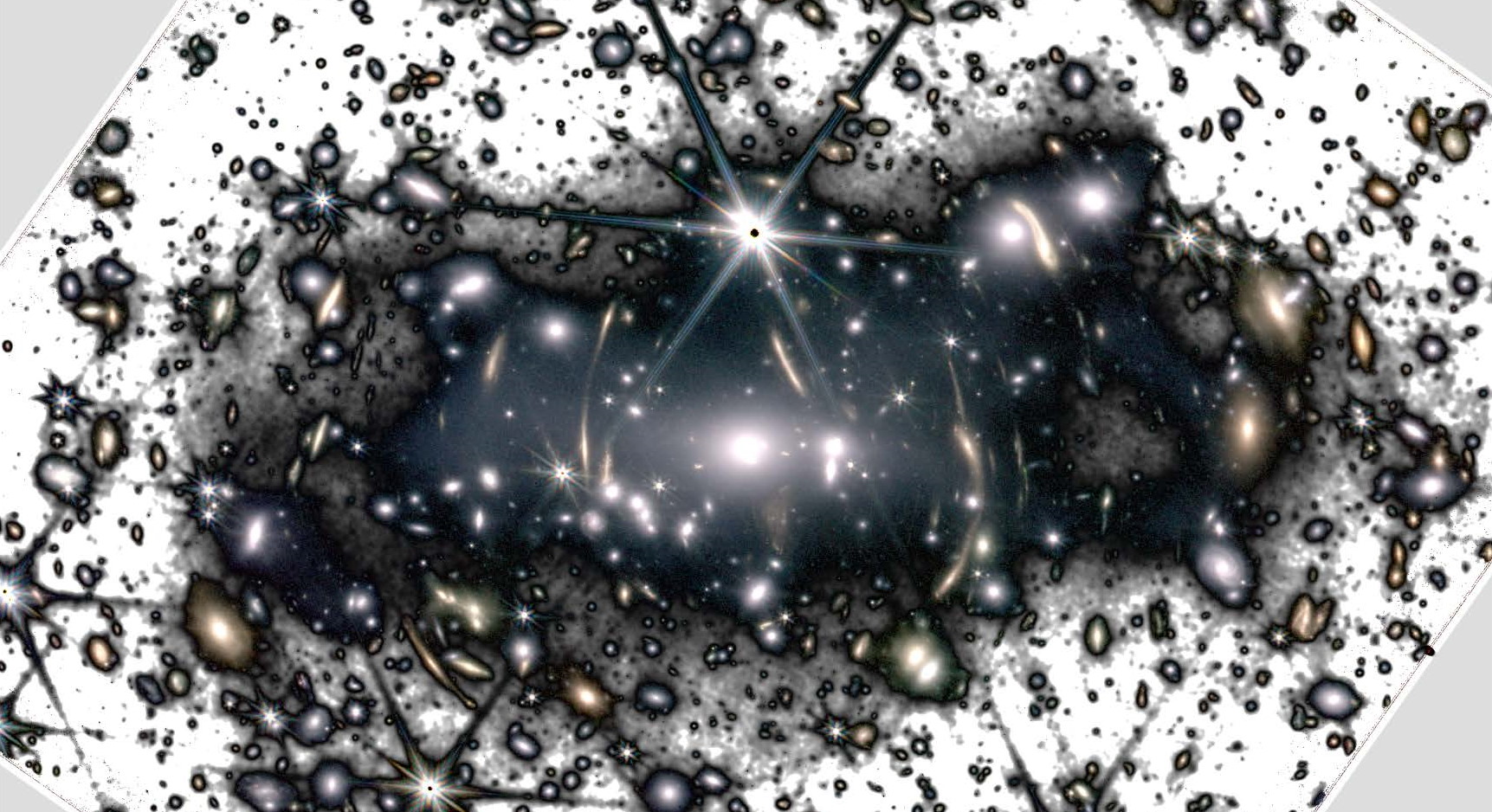The case for dark matter has strengthened

- Though it makes up about 26% of the Universe, we cannot see dark matter. But we know it's there because we can see its effects.
- Not all astrophysicists agree. Some argue that dark matter doesn't exist; instead, our understanding of the laws of physics needs to be modified.
- Evidence that once favored the "modified physics" hypothesis is now seen to be more consistent with the dark matter explanation.
The history of science is full of debates between opposing factions. Even today, astronomers debate big ideas — such as different models describing the motion of stars and galaxies, ranging from unseen dark matter to the claim that our understanding of the laws of physics is wrong. Each side points to different evidence that supports their position. Now, a new paper published in Nature Astronomy claims to debunk a key observation and, in so doing, strengthens the case that the Universe is full of unseen matter.
Modern astronomy makes an extraordinary claim. While powerful observatories, like the Hubble Space Telescope and the newer James Webb Space Telescope, can see billions of stars and galaxies, those breathtaking pictures are just a small fraction of the matter in the Universe. In addition to the glowing stars and invisible clouds of gas that exist in the space between them, most astrophysicists believe that the cosmos is filled with a substance called dark matter that neither emits, nor absorbs, light.
It should not come as a surprise, then, that dark matter has not been detected directly; it only can be observed by its gravitational effect on visible matter. According to the theory, dark matter is about five times more plentiful than ordinary matter.
The evidence for dark matter
There are many lines of evidence supporting the idea of dark matter, but the easiest to explain involves the rotation of galaxies. Galaxies are vast collections of stars in space, containing many billions of stars. The Milky Way, which is the galaxy in which our planet is located, is estimated to contain between 200 and 400 billion stars.
Galaxies rotate, which means the stars orbit the galactic center, not too differently from how the planets orbit the Sun in our Solar System. Though each planet is pulled toward the Sun, its velocity causess it to orbit in a nearly circular path. The velocity and gravity balance each other, with planets farther from the Sun moving more slowly than those located closer.
In galaxies, it is much the same, and the laws of physics make similar predictions, specifically that stars far from the galactic center move more slowly than ones nearer to it. However, when astronomers measure the speed of stars in the outskirts of galaxies, they find that they move quicker than predicted. If the laws of gravity and motion are correct, the only explanation is that extra, unseen matter is increasing the gravity experienced by these fast-moving stars.
The dark matter debate
However, a minority of scientists reject the dark matter hypothesis as implausible. Instead, they believe that the accepted laws of physics are incorrect. According to them, either the laws governing the motion of astronomical objects are wrong, or our theory of gravity doesn’t work on galactic scales. For both conjectures, these researchers have developed an array of new physics theories, governed by different equations than those taught in physics classes.
Both camps — the dark matter proponents and the modified physics community — point to different sets of astronomical data to support their position. And both groups can point to observations that support their conjectures and disfavor the other. While most astronomers embrace the idea of dark matter, there has been one observation that is extremely difficult for the dark matter camp to explain: the distribution of small galaxies surrounding bigger ones.
These smaller galaxies are called “satellite galaxies.” The two explanations — dark matter and modified physics — make different predictions about how satellite galaxies should be arrayed around galaxies like the Milky Way. For the past half century or so, astronomers have known that the observations favor the modified physics camp.
The Milky Way is a spiral galaxy, which means it looks a little like a spinning disk, about 100,000 light-years across and 12,000 light-years thick — essentially a cosmic pizza pan. This is the shape of the visible stars and galaxies. However, dark matter theory says that dark matter is essentially a big, spherical cloud, maybe 700,000 light-years across, with the Milky Way located at the center. Because dark matter is important in galaxy formation, dark matter theory suggests that the satellite galaxies of the Milky Way should also be spherically distributed around it.
On the other hand, if dark matter isn’t real, and the correct explanation for speedily rotating galaxies is that the laws of physics must be modified, scientists predict that the satellite galaxies should orbit the Milky Way in roughly the same plane as the Milky Way — essentially extensions of the Milky Way itself. When astronomers measure the location of the 11 known satellite galaxies of the Milky Way, they find that they are located in the plane of the Milky Way. Furthermore, the observed configuration is very improbable from a dark matter point of view. So, this is a win for the modified-gravity crowd.
Another win for dark matter
The paper recently published in Nature Astronomy takes another look at this observation using extremely precise data measured by the Gaia satellite. Gaia was designed to measure the location and direction of motion of up to a billion stars, and the satellite galaxies of the Milky Way were included in the study.
What the paper found was that the methodology used to determine the orbital plane of the ensemble of satellite galaxies was heavily influenced by two satellite galaxies, called Leo 1 and Leo 2, that were the most distant (about 700,000 to 800,000 light-years) from the center of the Milky Way. (The mathematical methodology weighted the effect of satellite galaxies by their distance squared.)
Both Leo galaxies are currently located approximately in the plane of the Milky Way. However, the other, closer satellite galaxies are more spherically distributed, although not completely so. If the Leo satellites are excluded from the analysis, the data no longer strongly favors the modified physics hypothesis. Importantly, when the motion of the Leo galaxies is measured by the Gaia satellite, the authors found that their location in the plane of the Milky Way is a temporary one. When they project their location a billion years into the past or future (a blink of an eye, cosmologically speaking), these galaxies are no longer located in the galactic plane.
In other words, when the over-emphasis on the Leo satellite galaxies caused by the algorithm is taken into account, along with their temporary alignment in the galactic plane, the observations of the Milky Way’s satellite galaxies are now totally consistent with the dark matter hypothesis.
Granted, a single measurement is not enough to definitively decide the debate. However, it appears that one of the strongest examples of data favoring modified physics and disfavoring dark matter no longer has the impact it once had. Given the broad support by other data for dark matter, this paper has strengthened the case for it.





